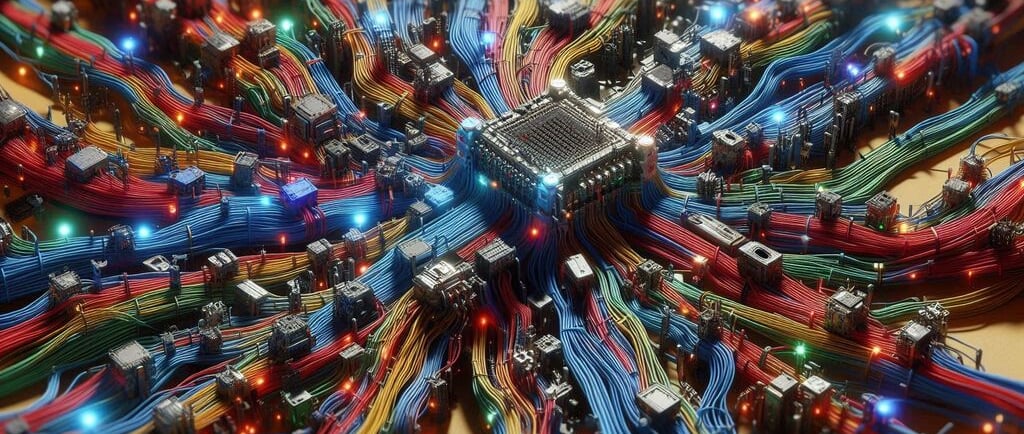Wiring Harnesses
Whether it’s in your car, a home appliance, or industrial equipment, wiring harnesses play a critical role in delivering power and signals efficiently.
ELECTRICAL SYSTEMS
11/14/20244 min read


Wiring Harnesses: A Complete Guide to Choosing, Using, and Maintaining
Whether it’s in your car, a home appliance, or industrial equipment, wiring harnesses play a critical role in delivering power and signals efficiently. But what exactly is a wiring harness, and why is it so essential in modern technology? This article will cover the basics of wiring harnesses, explore their many uses, discuss the advantages they offer, and share tips for choosing the right one for your needs.
What is a Wiring Harness?
A wiring harness is an organized set of wires, terminals, and connectors that bundle electrical cables and route them through a device, vehicle, or other systems. Think of it as the nervous system of an electronic device—each wire transmits electricity and data to keep things running smoothly.
Wiring harnesses are used across industries, including automotive, aerospace, industrial equipment, and consumer electronics, where they provide structured, efficient ways to manage cables while reducing clutter and improving safety.
Key Components of a Wiring Harness
Wiring harnesses are made up of several essential parts, including:
Wires and Cables: These conductors carry electrical signals and power from one part of a device to another.
Connectors: Connectors link different components within the harness and attach it to various parts of the device.
Terminals: These end-points ensure a secure connection between the harness and the components it powers.
Sheathing and Insulation: Protective covers prevent interference, damage, and short circuits.
Why Wiring Harnesses Are Essential
Wiring harnesses offer numerous advantages in simplifying and securing electrical systems. Here are some reasons why they are so widely used:
1. Enhanced Safety
By bundling wires together, wiring harnesses reduce the risk of electrical shorts, overheating, and fires. Each wire is securely insulated, reducing the chance of exposure to moisture or chemicals that could lead to corrosion or a short circuit.
2. Improved Organization and Efficiency
Instead of running individual wires throughout a device, harnesses organize them into compact, manageable bundles. This approach reduces clutter, minimizes installation time, and makes it easier for technicians to conduct repairs or maintenance.
3. Durability and Longevity
Wiring harnesses are often designed with protective sheathing and insulation that withstand harsh environments, including extreme temperatures, chemicals, and mechanical wear. This durability helps extend the life of the entire electrical system.
Common Applications of Wiring Harnesses
Wiring harnesses are used in countless applications, but here are a few examples of their primary uses:
1. Automotive Wiring Harnesses
Cars, trucks, and other vehicles rely on wiring harnesses to connect everything from the engine and transmission to headlights, infotainment systems, and sensors. In a modern vehicle, there can be dozens of harnesses working together to ensure optimal performance.
2. Aerospace and Aviation
The complex electronic systems in aircraft demand highly reliable wiring harnesses. Here, safety and precision are paramount, and harnesses ensure that systems like navigation, control, and communication work flawlessly.
3. Industrial Equipment
Manufacturers use wiring harnesses to streamline machines and reduce potential hazards in factories and plants. From robotic arms to conveyor belts, harnesses keep electrical systems organized, ensuring smoother operations.
4. Consumer Electronics
From washing machines to televisions, wiring harnesses are essential for keeping the internal electronics of home appliances functioning. They simplify assembly, reduce manufacturing costs, and improve product reliability.
Tips for Choosing the Right Wiring Harness
Selecting the ideal wiring harness for your project involves considering various factors, from environmental conditions to system requirements. Here’s a checklist to guide you:
1. Identify Environmental Needs
Consider the environment in which the harness will operate. For example, automotive and aerospace applications may require harnesses that can endure extreme temperatures, vibrations, and exposure to chemicals.
2. Select the Appropriate Materials
The materials used in the conductors, insulation, and sheathing can vary depending on durability requirements. High-quality copper wires and flame-retardant, moisture-resistant insulation materials are often preferred for their reliability.
3. Focus on Compatibility and Specifications
Ensure that the wiring harness is compatible with the voltage and current requirements of your device. You may also need to consider any applicable industry standards, such as ISO certifications for automotive wiring harnesses or MIL-SPEC for military applications.
4. Consider Customization
If off-the-shelf wiring harnesses don’t meet your specifications, consider custom harnesses. Custom wiring harnesses can be tailored to specific dimensions, configurations, and environmental factors, ensuring optimal performance for your unique setup.
Maintenance Tips for Wiring Harnesses
To ensure a wiring harness lasts and performs efficiently, regular maintenance is essential. Here are some practical tips:
1. Inspect Regularly
Regular inspections help detect wear, corrosion, or damage that could affect performance. Look for any signs of fraying, discoloration, or loose connections and replace damaged sections promptly.
2. Keep Connections Secure
Ensure that connectors are firmly attached and terminals are tightly fitted to prevent vibrations from loosening the connections. Use clamps or ties to hold the harness in place and prevent wires from shifting.
3. Protect from Moisture and Chemicals
Exposure to water, oil, or chemicals can corrode wires over time. If the harness operates in a harsh environment, make sure it has appropriate insulation and sheathing to protect against these elements.
4. Avoid Excessive Flexing
Frequent bending or twisting of the harness can cause wear on the wires inside. Where possible, route the harness to minimize movement and prevent premature damage.
Conclusion: The Backbone of Electrical Systems
Wiring harnesses are the backbone of countless electrical systems, delivering organized, reliable power and signal connections. Whether used in vehicles, industrial machinery, or consumer electronics, a well-designed harness provides safety, durability, and efficiency. When choosing a wiring harness, prioritize environmental needs, material quality, and compatibility to ensure it meets the demands of your application.



